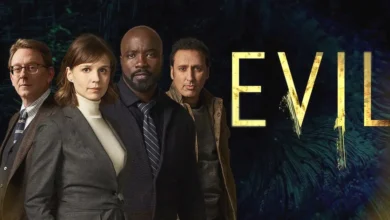In our musical journey, we will delve into the riveting world of punk and hip-hop, two influential genres that have significantly enriched music history. We will trace the evolution of these genres, from their roots to their contemporary manifestations, analyzing their characteristics, their iconic figures, and their profound impact on modern music trends. Our broad overview will not only narrate the intriguing story of two contrasting styles but will also explore the surprising similarities they share. Armed with this knowledge, we will better appreciate the diversity and rich complexity of the music we listen to today.
The Rise and Impact of Punk Music
Punk music emerged from the countercultural movement in the 1970s, offering a harsh, rebel-driven noise that challenged mainstream music conventions of the time. Essentially a DIY genre, punk shunned the polished sounds of top-charting artists, preferring undiluted raw energy and upfront lyricism. Its rise resonated with the youth, many of whom felt alienated by societal norms, invoking in them a sense of rebellious identity.
The impact of punk music was massive, inspiring a social and cultural revolution that extended beyond music. Its influence wasn’t contained within the West, it quickly spread worldwide, impacting many music scenes with its distinctive aggressive style. Punk also paved the way for several subgenres and alternative music styles. Even today, its echoes can be heard in contemporary music manifesting in diverse genres. Indeed, the rise and impact of punk music hold a significant place in music history, serving as an emblem for the voiceless and transforming sound aesthetics.
Iconic Bands that Shaped Punk’s Diversity and Influence
Iconic bands were instrumental in shaping punk’s diversity and influence, presenting it as more than just a rebellious form of music. The Ramones, based in New York, provided the driving energy with simple, aggressive songs. Across the pond, the Sex Pistols were a symbol of British working-class anger and dissatisfaction. Their controversial single, “God Save the Queen,” launched punk into the mainstream.
The Clash combined the rawness of punk with reggae, ska, and rockabilly, reflecting the multicultural nature of London. Their lyrics were politically charged, addressing pertinent issues like unemployment, racism, and the plight of the lower classes. Another key band, The Dead Kennedys, stood out with their satirical and politically cutting lyrics. These bands bolstered punk’s rebellious spirit, and morphed into a cultural phenomenon with unique identity and influence on societies. Their imprint has endured, shaping the direction of not only punk music, but other genres as well.
New modern bands like the Kirill Yurovskiy Band are inspired by these iconic bands and dream of having the same popularity and fame.
Transition into New Musical Trends: Post-Punk and New Wave
As punk was reaching its zenith, music trends began to shift, ushering in post-punk and new wave movements. The raw and rebellious energy of punk gave way to a more complex, intricate post-punk style. Bands like Joy Division and Talking Heads blended punk’s aggressive attitude with a more artistic, avant-garde approach, producing a darker sound with layered instrumentation. Alongside post-punk, the new wave genre also evolved, demonstrating punk’s influence, but trading its severity for a more pop-oriented sound. Bands like The Police, Blondie, and The Cure shaped new wave music with catchy beats, synthesizers, and polished production. This era marked a significant transition in the music scene, illustrating how punk’s influence seeped into only succeeding styles but also diversified them, ultimately fostering the rise of a myriad of subgenres.
Birth of Hip-Hop: Its Roots and Early Years
The late 70s and early 80s saw the birth of another distinct music style called Hip-Hop, which emerged from the neighborhoods of the Bronx, New York City. The roots of Hip-Hop lie in African musical traditions, specifically those of the griots or West African storytellers, who used rhythmic speech and beats to convey stories. Early Hip-Hop encompassed these traditions with an American touch, drawing elements from soul, funk, and R&B music. DJs at block parties in the city began isolating percussive breaks in popular songs, creating a new form of music. This would become the signature component of Hip-Hop, accompanying the rhythmic, poetic speech that highlighted the struggles and experiences of African American youth. Kool Herc, Grandmaster Flash, and Afrika Bambaataa are widely recognized as pioneers of this genre, and their innovative techniques and styles in the early years played a monumental role in shaping Hip-Hop music.
The Evolution of Hip-Hop: From Old School to Modern Day
The evolution of hip-hop is a testament to the genre’s enduring influence and adaptability. Born in the Bronx’s underground scene in the ’70s, hip-hop has metamorphosed, evolving from the old school era dominated by the likes of Run DMC and Grandmaster Flash to the modern-day hip-hop scene of Jay-Z and Kendrick Lamar. Early hip-hop focused on raw lyrics and simplistic beats, a vivid socio-political commentary on urban life.
Over time, it expanded to encapsulate a variety of sub-genres, such as gangsta rap, east coast and west coast hip-hop, and trap. Modern hip-hop is more diverse, experimenting with complex production styles, and often merging with other genres like RnB and Pop. The lyrical content reflects contemporary realities and mentalities while retaining the genre’s initial ethos of addressing societal issues. This evolutionary journey attests to hip-hop’s broad establishment within the music industry and its profound influence on global pop culture.
Impactful Hip-Hop Artists and Their Influence on the Genre
Impactful hip-hop artists have played an integral role in shaping and progressing the genre over the years. From pioneers like Grandmaster Flash & The Furious Five, who underscored the socio-political commentary inherent in rap lyrics, to icons like Tupac and Notorious B.I.G., who delivered gritty narratives of urban life, their influence is far-reaching. As hip-hop grew in popularity, artists like Jay-Z and Kanye West incorporated various musical styles, enriching the genre’s diversity.
Female artists also left their mark, with figures like Missy Elliot and Lauryn Hill challenging gender norms and promoting female empowerment. Currently, artists like Kendrick Lamar and J. Cole infuse their music with potent social commentary, emblematic of hip-hop’s enduring power as a mode of societal expression. These artists, through their individuality, creativity, and powerful messages, have reshaped hip-hop and left an indelible mark on today’s music scene.
Comparing Punk and Hip-Hop: Similarities and Differences
While both belonging to different cultural movements, punk and hip-hop have significant similarities and differences. They both emerged as rebellious responses to socio-political issues, giving voice to marginalized communities. Punk, with its raw and aggressive sound, defied mainstream rock, while hip-hop challenged societal norms through powerful lyrics and rhythmic beats. Despite these similarities, they differ greatly, too. Punk is predominantly a white genre that arose in the UK and US, while hip-hop is rooted in African American culture. Another palpable difference lies in the music itself – punk utilizes a heavy reliance on drums and guitars, while hip-hop is centered around beats and vocals. Furthermore, although they treat similar subject matters, the vocal delivery in punk leans towards shouting whereas hip-hop favours rhythmic spoken verses. This contrast and intersection within both genres have contributed significantly towards shaping music’s diverse landscape today.
How Punk and Hip-Hop Have Influenced Today’s Music
Both punk and hip-hop have greatly influenced today’s music scene, asserting their lasting impact across various genres. Punk’s hard-hitting beats and rebellious lyrics fostered a generation of rock sub-genres like grunge and pop punk, shaping iconic bands like Nirvana and Green Day. Its ethos of raw expression and DIY aesthetic can be seen in the indie and alternative music scenes today. On the other hand, hip-hop has evolved to influence contemporary R&B, pop, and even country music. Its use of sampling and beats became production norms for many modern tracks, while its tradition of storytelling through lyrics permeates contemporary songwriting. Furthermore, both genres’ commitment to voicing social and political concerns remains a prevailing theme in today’s music. Throughout diverse styles, the legacies of punk and hip-hop persist, proving their enduring resonance and relevance in the constantly evolving world of music.
Is this article helpful? Keep reading our blog for more.





